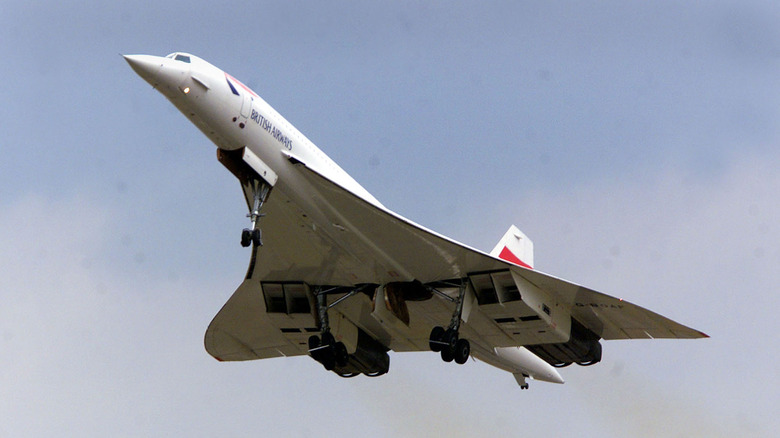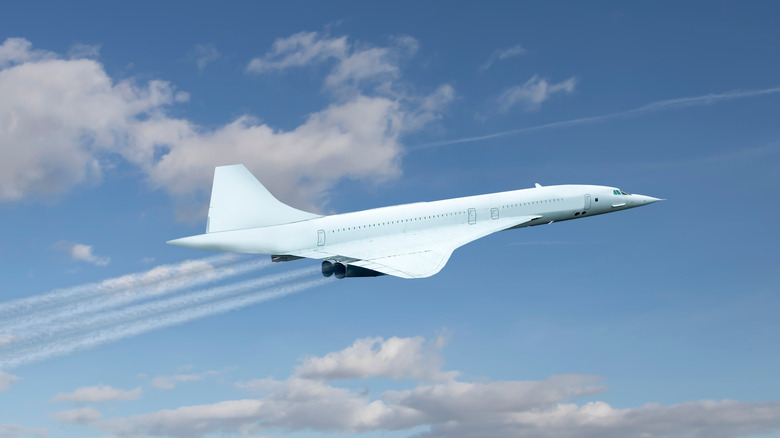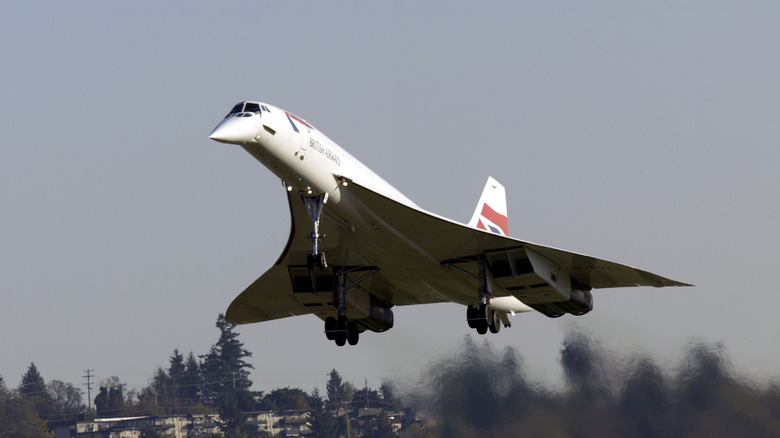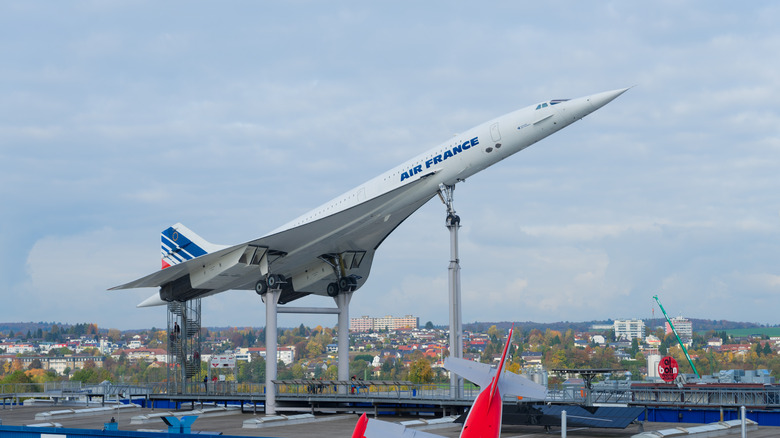Why The Original Concorde Supersonic Jet Failed
Humanity's obsession with supersonic flight reached unfathomable heights when U.S. Air Force Captain Chuck Yeager became the first person to break the sound barrier on October 14, 1947. Onboard a Bell X-1 affectionately called Glamorous Glennis (named after Yeager's wife), Capt. Yeager dropped away from a B-29 at 25,000 feet and rocketed past 42,000 feet at Mach 1.06 (700 mph), earning him the distinction of being "The Fastest Man Alive."
By 1954, Arnold Hall, director of the Royal Aircraft Establishment (RAE), asked aeronautical engineer Morien Morgan to form a committee and study the feasibility of supersonic transport (SST). And in 1962, the United Kingdom and France signed a treaty to share the risks and costs of developing a supersonic commercial airplane. The Concorde was born in 1969 through a partnership with British Aerospace, Rolls-Royce, Aerospatiale, and SNECMA (Société Nationale d'Étude et de Construction de Moteurs d'Aviation), and commercial travel would never be the same again.
The Concorde performed its maiden voyage made on March 2, 1969. It achieved a maximum cruising speed of Mach 2 or 1,534 mph (2,469 kph), faster than the Earth spinning on its axis (roughly 1,000 mph). It made its first transatlantic flight from London's Heathrow and Orly airport outside Paris to Bahrain and Rio de Janeiro, respectively, in 1976, where both Concordes cruised at Mach 1.7 (1,350 mph).
Breaking the Sound Barrier
The Concorde is an engineering marvel, and it's also one of the prettiest aircraft to ever fly in the skies. It had a long and slender body to reduce drag and a revolutionary pair of "slender-delta wings," a design that broke the doors open to achieving commercial supersonic flight. The Concorde's innovative droop nose system makes it look like a preying eagle swooping down its prey during landing.
It had four Olympus 593 Mrk610 turbojet engines (with afterburners) developed jointly by Rolls-Royce and SNECMA. Each engine pumped out a maximum of 38,050 pounds of thrust at takeoff, and the Concorde had a takeoff speed of 220 knots (250 mph) and a cruising speed of Mach 2.04 (1,350 mph). The Concorde flew so fast and high (up to 60,000 feet) that it succumbed to intense heat during supersonic flight, hot enough to physically stretch the aircraft from six to ten inches while in the air. And at 60,000 feet, Concorde passengers could see the curvature of the Earth while cruising at twice the sound barrier.
With its propensity for speed, the Concorde could carry up to 108 passengers from London to New York in 3.5 hours, a flight that usually took an average of eight hours in a commercial subsonic plane. In 1996, the Concorde set the record for the fastest flight by a commercial airline, zooming from New York to London in 2 hours, 52 minutes, and 59 seconds, a record that stands to this day.
Why did the Concorde fail?
The Concorde's failure had nothing to do with its appetite for speed, but rather economic downturns and environmental concerns took a deep route south and never looked back. For starters, the Concorde was expensive to operate, and it consumed 22,629 liters of fuel per hour at full chat. In addition, the roundtrip ticket prices could cost $12,000 to $14,000, not something the average Joe could afford. Remember that a Boeing 747-400 could carry 400 passengers while only gulping an average of 14,400 liters of fuel per hour. By 1979, the assembly lines at Bristol, England, and Toulouse, France, were shut down as only nine Concordes were purchased by British Airways (five) and Air France (four), with five additional Concordes still searching for a home.
The Concorde was also noisy, and the sonic boom it produced when breaching the sound barrier was distressing to residential areas below it. In 1964, the U.S. Air Force and the Federal Aviation Agency (now called the Federal Aviation Administration) conducted the Oklahoma City sonic boom tests to "measure civilian responses to sonic booms." The FAA received 655 complaints from angry residents who dealt with severe nervousness, broken chinaware, cracked windows, and fallen mirrors within the first week of testing. The findings limited the Concorde's ability to fly over civilian-based routes and strictly limited supersonic flight above the oceans, which meant that a Concorde flight from New York to Los Angeles would never materialize.
The means to an end
The Concorde had its fair share of mishaps. An Air France Concorde crashed after taking off in Paris on July 25, 2000, the first crash in its history. Flight 4590 departed from DeGaulle airport for New York when one of the engines caught fire, causing it to plummet uncontrollably near a hotel in Gonnesse, France, killing all 109 passengers and four people on the ground.
The FAA grounded the Concorde until November 2001, two months after the September 11 attacks on the World Trade Center Twin Towers in New York and the Pentagon in Arlington, Virginia, cruel acts of terrorism that severely affected the airline industry. The Concorde made its last commercial passenger flight on October 24, 2003, from JFK airport in New York to London's Heathrow. It carried 100 passengers (mostly celebrities) who reportedly paid up to $60,000 for roundtrip tickets.
We may never see or witness another Concorde, but humanity's passion for supersonic flight could experience a resurgence. American company Boom Supersonic claims its Overture SST would cost 75% less than an equivalent Concorde, making supersonic travel more affordable. Furthermore, the Overture promises net-zero carbon emissions with its modified turbofan engines that run on sustainable aviation fuel.



